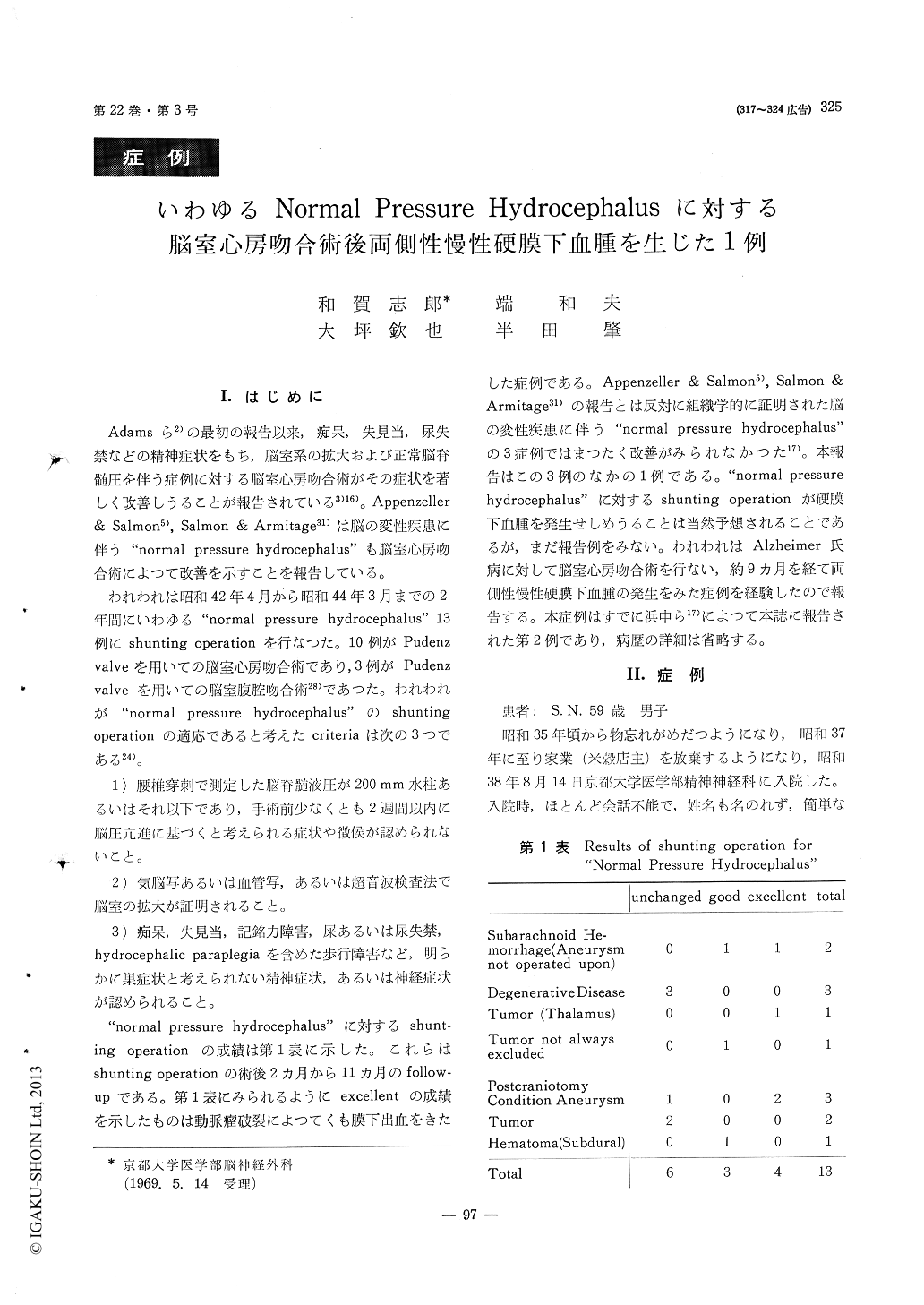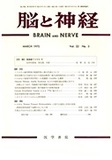Japanese
English
- 有料閲覧
- Abstract 文献概要
- 1ページ目 Look Inside
I.はじめに
Adamsら2)の最初の報告以来,痴呆,失見当,尿失禁などの精神症状をもち,脳室系の拡大および正常脳脊髄圧を伴う症例に対する脳室心房吻合術がその症状を著しく改善しうることが報告されている3)16)。Appenzeller & Salmon5),Salmon & Armitage31)は脳の変性疾患に伴う"normal pressure hydrocephalus"も脳室心房吻合術によつて改善を示すことを報告している。
われわれは昭和42年4月から昭和44年3月までの2年間にいわゆる"normal pressure hydrocephalus"13例にshunting operationを行なつた。10例がPudenzvalveを用いての脳室心房吻合術であり,3例がPudenzvalveを用いての脳室腹腔吻合術28)であつた。われわれが"normal pressure hydrocephalus"のshuntingoperationの適応であると考えたcriteriaは次の3つである24)。
The development of chronic subdural hematoma after shunting operation in cases of "normal pres-sure hydrocephalus", has never been reported so far as the authors know. The following is such a case. A ventriculo-atrial shunt had been performed in a 59-year-old man who had suffered from Alzheimer's disease during previous 8 years. At the time of opera-tion a biopsy specimen was taken from the brain and the diagnosis of Alzheimer's disease was histo-logically confirmed. Nine months later, following fall to the ground, the presence of bilateral chronic subdural hematomas was accidentally found by an-giography and confirmed at operation.
Review of literatures shows that any procedures, which may result in collapse or decrease in size of ventricles, such as ventriculoatrial shunt, pneumo-encephalography, and administration of hypertonic solutions, might give rise to subdural hematoma even in patients with "normal" size of ventricles.

Copyright © 1970, Igaku-Shoin Ltd. All rights reserved.


